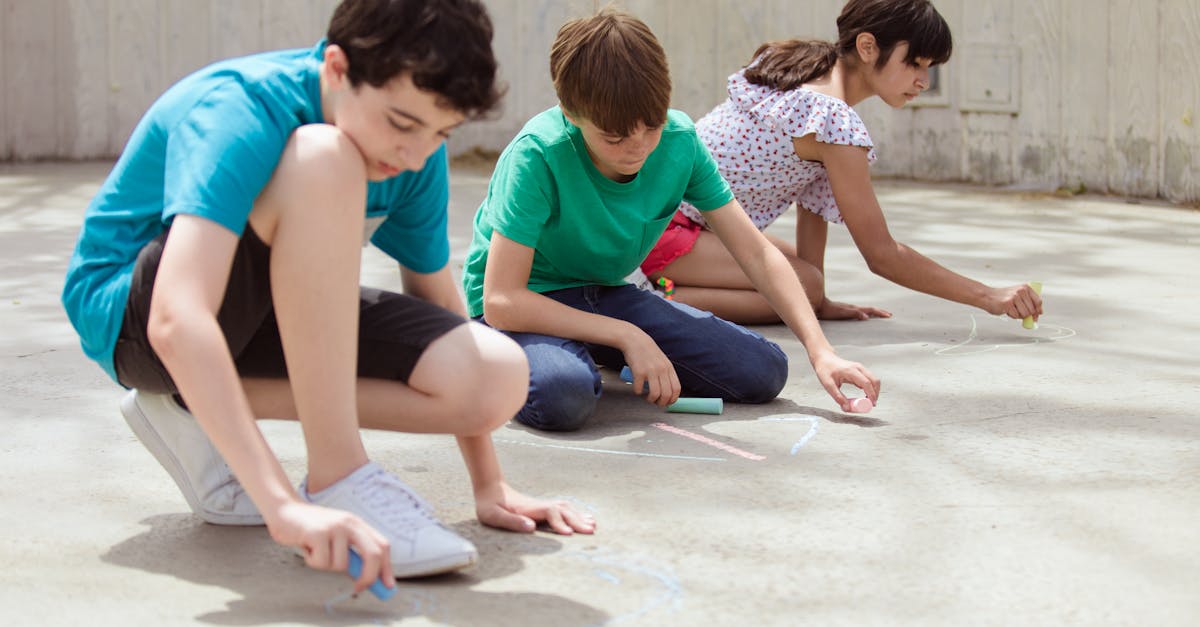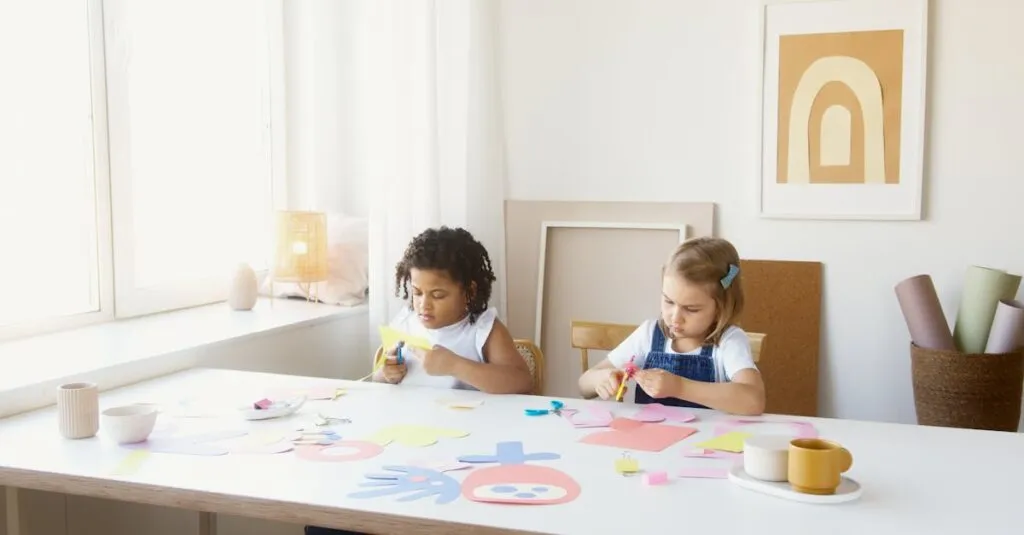The Magic of Crayons and Glitter
Art supplies like crayons and glitter can turn any day into a vibrant spectacle! Kids love the swirl of colors and the opportunity to create.
By introducing art projects, parents can subtly teach empathy. For example, crafting a family portrait gives kids a chance to think about each family member’s feelings.
Art Projects that Encourage Empathy
Consider asking questions like:
- “What color represents how mom feels today?”
- “How does drawing dad make you feel?”
These observations help children explore emotions and develop empathy.

Art as a Gateway to Understanding Feelings
Turning art into a feelings fest reinforces how fun understanding emotions can be. Try asking your child to draw how they feel on a ‘happy day’ as opposed to a ‘stormy day’. This method isn’t just cute – it’s a powerful tool.
According to child psychologists, identifying emotions visually increases emotional intelligence. Plus, who doesn’t love a masterpiece titled, ‘Why My Brother Ben Is a Goof’ stuck on the fridge?
Encourage Sharing: A Big Step in Empathy
Crafts that involve sharing, like creating a communal art piece with friends or siblings, promote empathy. Sharing glue, waiting for scissors, and negotiating ‘my turn’ are not just sticky situations, but marvelous learning moments.
These shared experiences teach patience, kindness, and understanding. Encourage kids to express how they feel when waiting their turn – it’s a golden opportunity for them to learn empathy from frustration!

When Paint Splatters Teach Emotions
Using paint to express emotions can be a fun and educational mess. It’s thrilling to see ‘anger’ depicted through red and black splatters or ‘excitement’ with vast strokes of yellow and orange.
Encourage cleaning up as a team afterward, teaching accountability – an important aspect of empathy. Turns out, the splattered walls aren’t just a parent’s nightmare; they’re a child’s emotional masterpiece!

Letting children express their emotions through art is not just beneficial but also essential for their emotional development. Here are some key benefits of this activity:
- Creative Expression: Allowing children to use colors and textures fosters their creativity.
- Emotional Awareness: Painting can help children identify and articulate their emotions.
- Teamwork Skills: Collaborating on cleanup teaches the value of teamwork and responsibility.
- Fun and Engagement: Engaging in messy play keeps children excited and focused.
So, the next time you see splatters of paint, remember that they are not just chaos, but an expression of the rich emotional world within your child!
Guided Imagination: Creating Empathy Stories
Storytelling through art can open worlds of empathy. Instruct children to draw characters when narrating tales about friendship and kindness. This way, they create their own ’empathy heroes’.
After the story, discuss the character’s allegiances, troubles, and wins. This structured playtime not only thrives on imagination but also deepens understanding of others’ emotions.

Consider incorporating some guided questions to foster deeper discussions:
- What challenges did the character face?
- How did the character show kindness?
- What did you learn from this story?
By engaging in these activities, children can better connect with their feelings and the feelings of others, paving the way for a more empathetic mindset.
Crafting Together: Fun for All Ages
Crafting isn’t just for kids; it’s a family affair. Collaborative art projects can teach empathy to both very young and grown-up ‘children’. When families sit down to craft together, laughter mingles with paint n’ glitter – a perfect dish for bonding!
Don’t forget to share your creations online. That’s where you might find other parents tackling emotions with one paper plate and a handful of googly eyes at a time!

